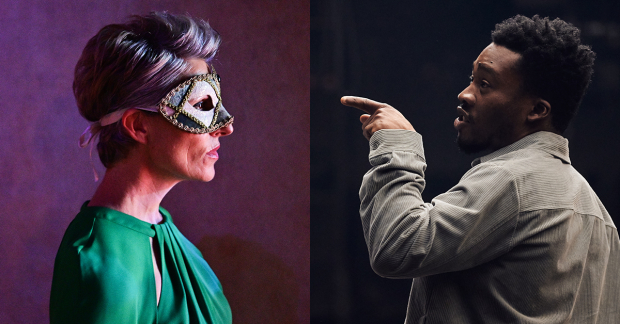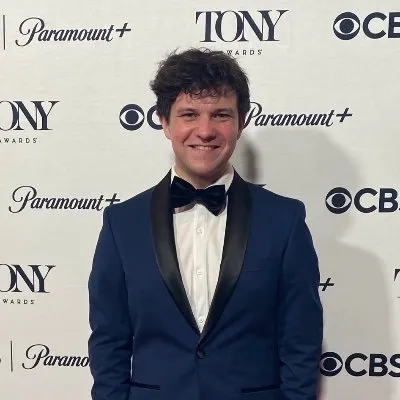Tamsin Greig, Fisayo Akinade and Simon Godwin discuss the National's Romeo and Juliet on screen
The trio chatted about the upcoming TV broadcast

© Rob Youngson
This Easter weekend is a big one for theatre fans – the world premiere of the National Theatre's Romeo and Juliet, which was captured at the central London venue at the end of 2020.
Originally intended to be presented as a stage show, the pandemic forced the creative team to transform the piece into a 90-minute film, led by Josh O'Connor and Jessie Buckley in the titular roles. We'll have an interview with the pair coming later this week.
Speaking to director Simon Godwin and performers Fisayo Akinade and Tamsin Greig, it's clear that there was a steep learning curve involved – none least for Godwin who, despite having wowed with major stage projects, has never gone behind the lens.
"I never even thought to myself as somebody who would even direct a film,", he admits over Zoom, "I don't even have any television." It's remarkable, therefore, that the experience is utterly delightful – an hour of a half of masterful performance mingled with some top notch camera work.
For Greig, who takes on the role of Lady Capulet in Shakespeare's iconic tragedy, it was more to do with the social distancing measures that were in place to mitigate risks: "It was very constraining. You knew that you were about to do something wrong all the time. I couldn't touch anybody! So I just thought: 'well I'm either going to kill myself because this is just too difficult' or I've just got to use it. So that's who Lady Capulet became – someone who always observed the rules… even if you are this unstable emotional girl and you throw yourself at me and crawl up me, I am not going to touch you because that's against the rules. The limitations of the circumstances became very fruitful ground."
Akinade's role of Mercutio is given greater focus in this version of Romeo and Juliet, with the character in a relationship with Romeo's cousin's Benvolio. He explains the experience and the new thematic levels that such choices provide: "For Emily [Burns, associate director and adapter] and Simon to include a moment of connection and tenderness in a world that is very violent, was lovely.
"I loved them for putting it in because it then informed how everybody interacted with Mercutio. If they know that he is openly gay, then what does that do? If Tybalt knows that Mercutio is openly gay, their lines together are colored with something, which then provokes something in Mercutio that then escalates the situation further."
One of the most striking things about the production is the trembling, organic nature of the camera work – thanks to handiwork of director of photography Tim Sidell. Importantly, Sidell was in rehearsals from the very beginning. Greig explains why that worked so well: "Tim wasn't only just perceiving the piece, but he was almost breathing it with us. That was really, really wonderful. I've never had that amount of rehearsals in a film before, and Tim was playing the cinematographer in the same that we were playing these other characters. It was a fantastic amalgam."
Godwin agreed, saying: "The collective sense of endeavour and capturing life was much more successful because of Tim's commitment to being a member of the company." Akinade adds: " I've never done a fight sequence in a film, but they shoot them in little bits. And our fight in, in the, in the opening of Romeo and Juliet was done in one. It never felt like a technical exercise."
This version of Romeo and Juliet, where the extravagance of Verona is muddled with a grittier, greyer vision of a rehearsal room – is pretty novel – but where did Godwin's ideas come from? "This notion of different levels of consciousness, of reality, that we could actually bring to light through the camera, was something that we do never do stage. It became a very, very liberating part of the process for me – it helped me see the play in a very different light."












